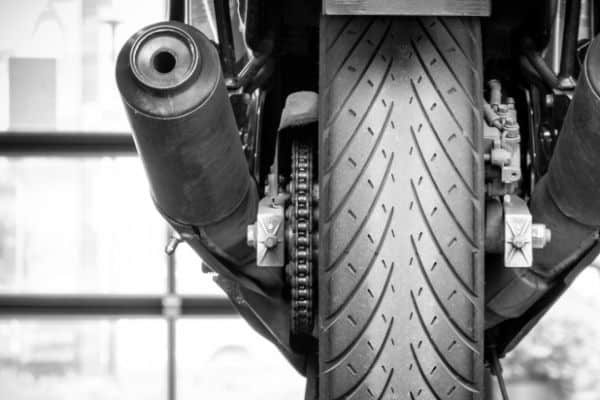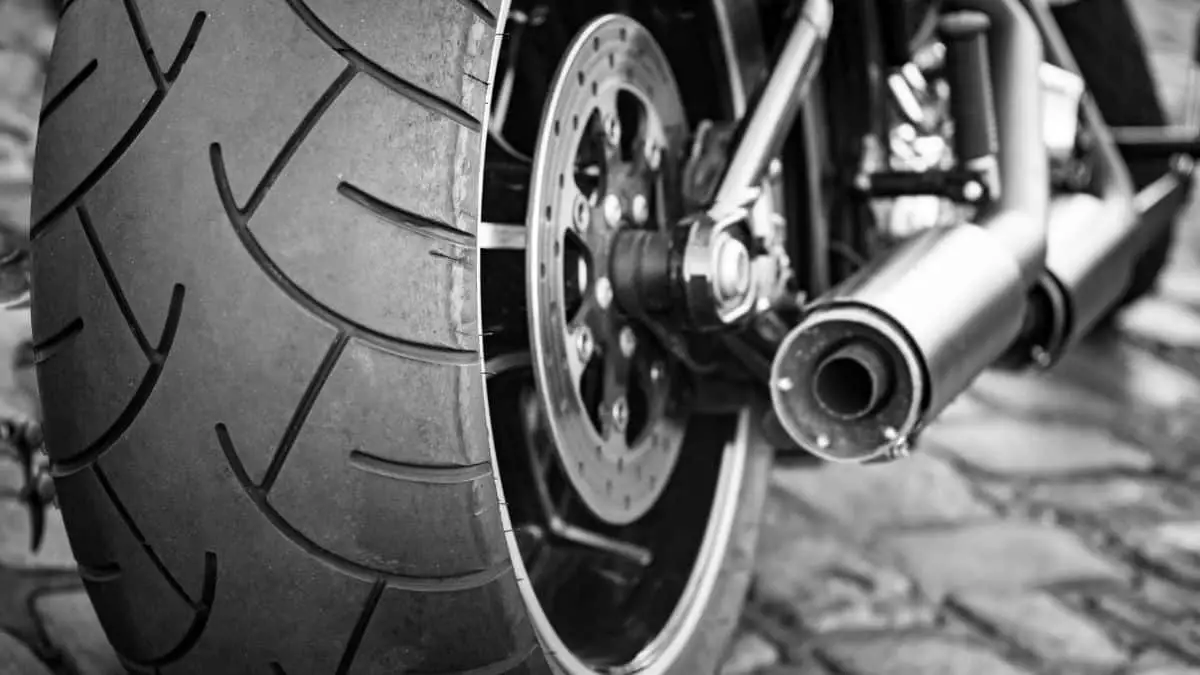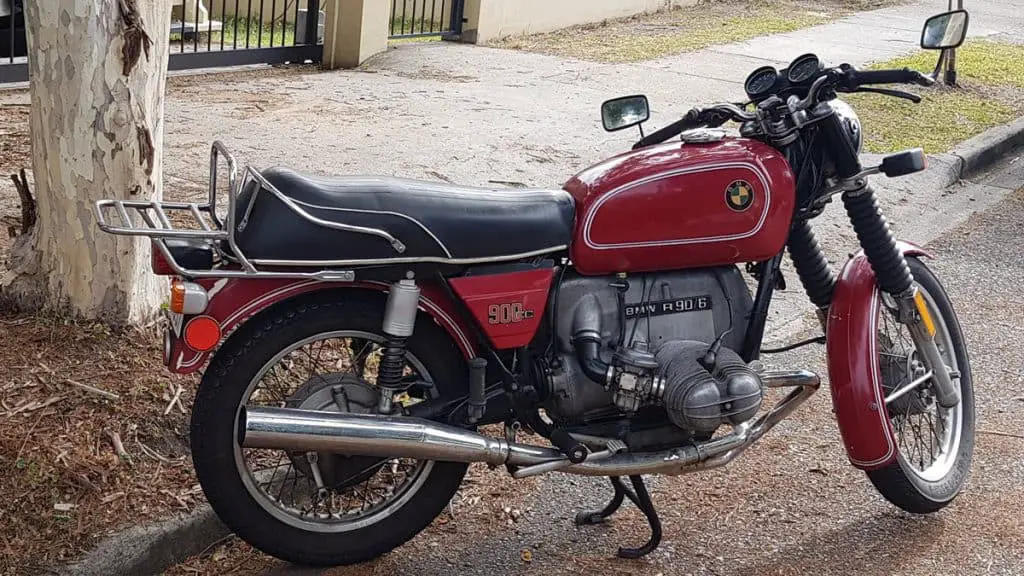Wide Rear Tire Motorcycle — Is Bigger Really Better?
Do you really need wider tires on your motorcycle?
Obviously, if you’re the caped crusader out for vengeance, you might need them. Or else, a roaring Harley with big tires might be the object of your desire.
But for ordinary folks like me, a wider tire is not always the best choice.
Why do I say this?
Let’s take a closer look and find out.
Wide Rear Tire On Motorcycle: A Few Facts
Ever wondered why the rear wheel of a bike is wider than the front one?
Let’s not forget that the entire engine power is transferred to the rear wheel. Narrow tires don’t have the ability to handle the high horsepower and will wear out easily.
A wider tire will handle the power better. It will also dissipate heat more effectively and will also last longer.
Front tires are kept narrower as that makes them flexible and more suitable for easy navigation.
On the other hand, the rear wheel bears the major portion of the bike’s load. A wider rear tire leads to a bigger contact patch and more traction. As a result, you also get a better balance.

For manufacturers, choosing a tire size for a bike is balancing the engine capacity with stability and wear resistance.
That’s why motorcycles with less powerful engines have thinner tires. Whereas cruisers and super sports bikes have heavier tires.
Moral of the story: simply adding fat tires to a bike with low engine capacity won’t work, even if you choose what you think was the best among all the motorcycle tires you’ve laid your eyes on!
That said, if you’re a biker who loves that tough look, a powerful motorcycle with a big back tire might be the perfect choice for you.
If that inspires you to replace your 150 mm tire with a 200 mm, HOLD ON.
There are other factors that you need to keep in mind!

Remember: components of a motorcycle aren’t just about aesthetics. Every component needs to balance each other to bring the best performance to the table. And that’s how the manufacturers test their products.
No wonder motorcycle tires are so expensive.
The moment you’re changing a component with a different specification than the one suggested by the manufacturer, it can affect the handling and comfort.
(Can you be more specific?)
Take a look.
- A wider tire is heavier. With the increase in the bike weight, the brakes and the suspension system have to work harder. That will result in more maintenance.
- Another effect of the extra weight will be on the acceleration. The bike will feel heavier when you blip the throttle.
- Handling isn’t so smooth and effortless with wider tires. Staying in line or maneuvering through busy traffic will need more bar input.
- With a wider tire, the rolling resistance acting on the bike increases. That means a wider tire will need more power to move at the same speed as a thin tire. That will result in more fuel consumption and a negative impact on the mileage.
- In most cases, fatty tires come with a high price tag. So you need a fat pocket to install a fat tire on your bike.
Now, here’s something that you might find interesting…
The forces acting on the bike when you are turning a corner are complex. Basically, the torque acting through the center of gravity of the bike balances the centripetal force acting on the bike. (Pardon my French.)
If these forces don’t balance, you simply won’t be able to ride through twisties.

With a wider tire, the tire contact patch moves away from the centerline of the bike. So, the bike needs to lean more to achieve the necessary balance. That’s why lighter bikes with thin tires can tackle tight corners at higher speeds. They simply don’t need to lean so much.
Most importantly, you need to match the tire with the rim size. Putting a wide tire in a narrow rim can affect the bike’s geometry.
Pinching the tire profile to fit a narrow rim can reduce the size of the contact patch. Now that’s as bad as trying to eat with one chopstick.
Beyond that, the larger tire can rub against the swingarm. It can also clash with the chain or the driveshaft.
Not to forget, a wide rear tire in a motorcycle can rub against the hardware under the fender or the wires connecting with the tail light. And even if the fatter tire seems to have perfect clearances, you can’t be sure.
Keep in mind, depending on the load on the bike and the wear pattern, the tire profile may change with time. So the tire might start brushing with other components after a period of time.
(Who would have thought…?)
Any of these scenarios can lead to a potentially dangerous situation while riding. So make sure that you consult a technician to check all clearance before making any changes for installing a bigger tire.
What Does a Wider Rear Tire Do For a Motorcycle?
Let me guess. You have already made up your mind about installing a wide motorcycle rear tire.
Take it easy. The picture isn’t all dark and gloomy!
There are some positive aspects to wider tires as well.
- A wide back tire will add to the traction and stability of the bike. This is especially helpful while riding over wet and slippery roads.
- With a larger contact patch, you will get more stability at high speeds.
- As more tire surface is in contact with the ground, the bike will absorb the bumps better. This will enhance the overall ride comfort.
- A wider tire surface also allows better power transfer from a powerful engine.
- The larger contact patch also provides better stability while cornering.
In most cases, riders prefer to change the width of the rear tires while keeping the front tires unchanged.
If you’re planning to replace both the front and rear tires with wider substitutes, think again. A motorcycle with wide tires both on the front and back might not offer the right handling and performance
Best consult an industry expert before taking that step.

What’s the bottom line?
Tire dynamics will change depending on the tire width you choose. So, considering factors like engine power, stability, comfort, and appearance is necessary before making a tire change.
In addition, take into account the cost and maintenance aspects as well.
If you’re willing to make the necessary compromises, you can always choose the widest tire that will fit your bike.
Frequently Asked Questions
What are the benefits of a wide rear tire in a motorcycle?
A wider rear tire has multiple benefits. It offers better stability at higher speeds and improves ride comfort. But they also have some disadvantages and not all motorcycles are suited for wider tires.
Is a fat front tire better?
A wider front tire will help you to ride over rough roads more easily. On the other hand, it will reduce the maneuverability of the motorcycle.
Are motorcycles with wider rear tires better?
Motorcycles with wider rear tires aren’t always the best choice. The choice will depend on your riding style, the performance you seek, and your budget.






